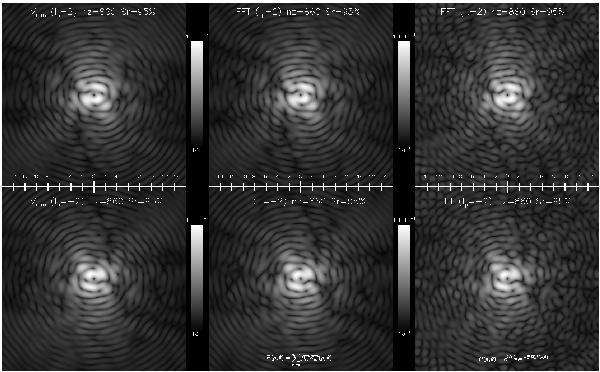Fig. 3

Numerical simulation illustrating the principle of Nijboer-Zernike retrieval applied on the vortex coronagraph. (Up to down), numerical simulation for each circular polarization with lp = 2 and lp = −2 respectively using the first 860 Zernike polynomials (40 complete modes) and a Lyot stop of 99%. The Strehl ratio of the PSF before coronagraphic filtering is 95%. The Lyot stop remove the strong diffraction value in ρ = 1 but allows us to show all images without scaling the  coefficients (
coefficients ( ). (Left to right), final monochromatic (λ = 650 nm) coronagraphic image obtained with the sum of
). (Left to right), final monochromatic (λ = 650 nm) coronagraphic image obtained with the sum of  analytical functions, the FFT of the direct sum of Zernike polynomials
analytical functions, the FFT of the direct sum of Zernike polynomials  in the pupil plane, and finally, the classical phase function obtained by
in the pupil plane, and finally, the classical phase function obtained by  . Due to the difference of basis, the final simulation with the classical phase function presents minor discrepancies in the speckle background (Ic < 10-7, Ic is the coronagraphic final intensity). The image scales are not linear
. Due to the difference of basis, the final simulation with the classical phase function presents minor discrepancies in the speckle background (Ic < 10-7, Ic is the coronagraphic final intensity). The image scales are not linear  .
.
Current usage metrics show cumulative count of Article Views (full-text article views including HTML views, PDF and ePub downloads, according to the available data) and Abstracts Views on Vision4Press platform.
Data correspond to usage on the plateform after 2015. The current usage metrics is available 48-96 hours after online publication and is updated daily on week days.
Initial download of the metrics may take a while.


